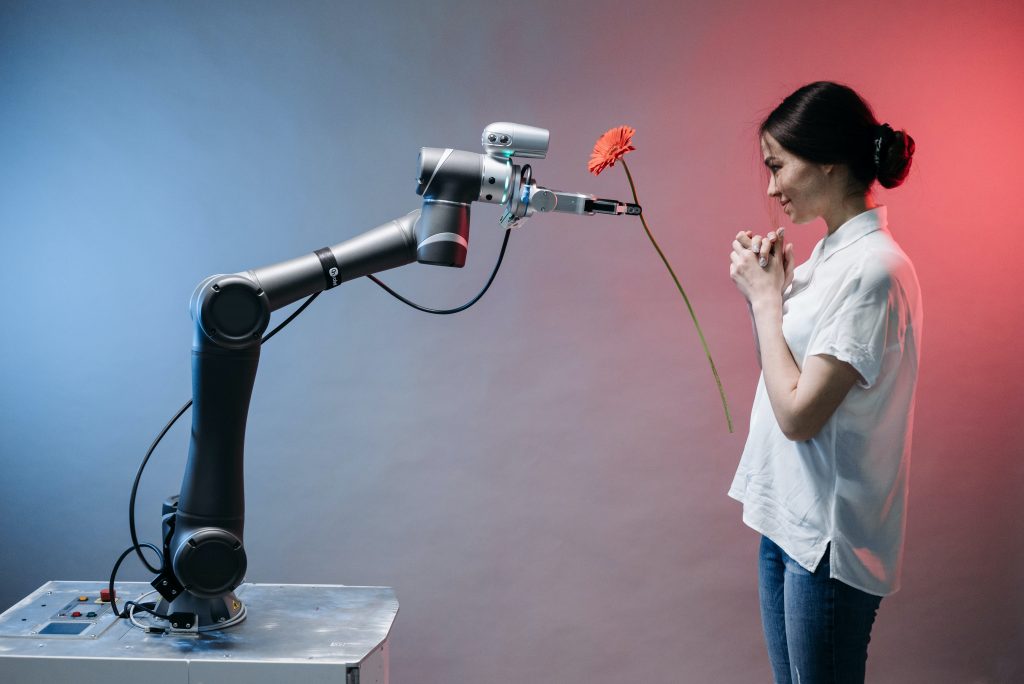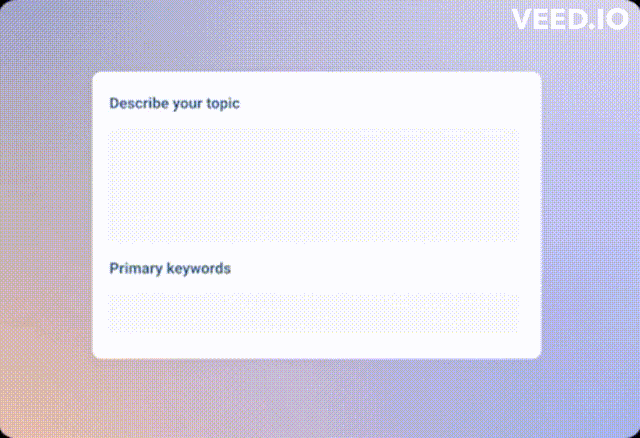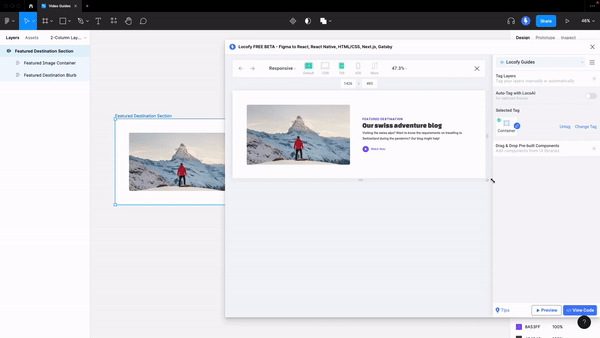Due to the rapid growth of artificial intelligence (AI), the world has recently seen major changes in the field of web development. The immense impact of AI on web development cannot be understated as it makes substantial advancements across numerous industries. An innovative, efficient, and user-centric era has arrived thanks to the integration of AI and web development.
The development, management, and optimization of websites have been completely transformed by artificial intelligence, which can imitate human intelligence and learn from data.
But how does AI impact web development? Does it have a negative effect? Will artificial intelligence replace human labor in web development?
In this blog, we will explore the complex impact of artificial intelligence on web development. We will explore how machine learning and AI-powered algorithms are reshaping how websites are created, developed, and customized. So, fasten your seatbelts and get ready to explore the captivating world where artificial intelligence meets web development, as we uncover the transformative impact it has on the digital realm.
What is artificial intelligence (AI) in Web Development?
Artificial intelligence (AI) in web development is the use of artificial intelligence tools and methods in the creation, maintenance, and design of websites and online-based programs. AI may be used to improve a variety of areas of web development, including user experience, task automation, and the ability to make intelligent decisions.
Impact of AI on Web Development
Web Development with Artificial Intelligence
AI can enhance various aspects of web development, including user experience, data analysis, personalization, automation, and natural language processing.
Here are some key areas where AI is commonly used in web development:
Chatbots and Virtual Assistants: AI-powered chatbots and virtual assistants have grown popular on websites. They give real-time customer service, answer questions, and assist with various activities. Natural language processing (NLP) methods enable these AI bots to interpret and respond to human inputs, improving user experience and engagement.
Examples of Popular Chatbots
• Google Bard • ChatGPT
Examples of Popular Virtual Assistants
A demonstration of the “Translata” web application, which was created using an AI chatbot.

The development of the web app “Translata,” which translates between 12 Philippine languages, including Hiligaynon, Cebuano, Ilocano, Tagalog, Kapampangan, Waray-Waray, Bikol, Pangasinan, Maranao, Maguindanao, Tausug, and Chavacano, was done by an 18-year-old Filipino student named Jose Arron Franz Suoberon. Using ChatGPT’s GPT-3.5 version, he then worked on Translata for around three days. Translata was released on May 25, 2023, and it has quickly become popular in the Philippines. The app has been downloaded over 100,000 times.
Personalization and User Experience: AI algorithms analyze user behavior, preferences, and historical data. By utilizing machine learning techniques, websites may dynamically modify information, suggestions, and style to suit unique user preferences. This boosts conversion rates and user satisfaction.

Automated Testing and Bug Detection: Automatic testing of online apps for errors, performance problems, and vulnerabilities is possible with AI-based testing solutions. The testing process is accelerated and made more precise by these technologies, which use machine learning to spot patterns and anomalies. As a result, the overall quality of the program is improved by helping developers find and address problems early in the development cycle.
Content Generation and Curation: AI algorithms can generate content, such as product descriptions, blog posts, and news articles, by analyzing existing data and patterns. This streamlines content creation processes reduces costs, and helps maintain a consistent flow of content. AI-powered curation tools also help websites filter and recommend relevant content to users.
Here is an example of an AI Content Generator named “Hypotenause AI” that streamlines your writing and image generation process from content ideation to co-creating entire campaigns with AI.
Natural Language Processing and Search: AI has revolutionized the field of web search by enhancing its natural language processing abilities. This improvement allows search engines to comprehend the context and purpose behind user queries, resulting in more precise and reliable search outcomes. Additionally, the progress made in AI technologies has contributed to the widespread use of voice-based searches and voice assistants
Responsive Web Design: AI algorithms can analyze user devices, screen sizes, and preferences to optimize web designs automatically. This enables websites to adapt their layout and responsiveness for different devices and screen resolutions, ensuring a seamless user experience across platforms.
The brief demonstration of a platform called “Locofy AI” demonstrates how styles may be modified for various device breakpoints.
Data Analysis and Insights: AI algorithms help analyze large volumes of web data, such as user interactions, click-through rates, and conversions. By processing this data, websites can gain valuable insights into user behavior, identify trends, and make data-driven decisions to optimize their performance.

Security and Fraud Detection: AI plays a crucial role in enhancing web security. It can identify patterns and anomalies in user behavior to detect potential security threats, such as fraud or hacking attempts. AI-powered security tools can automatically flag suspicious activities, protect user data, and mitigate risks.
Web Development without Artificial Intelligence
Without using AI technologies, web development can still be done successfully. Making useful and user-friendly websites does not require AI. Traditional web development methods and tools have been effectively applied for many years and are still extensively utilized.
Here are some key aspects of web development that can be accomplished without AI:
• Front-end Development: Front-end development involves creating the visual and interactive elements of a website using HTML, CSS, and JavaScript. This process includes designing layouts, implementing navigation, styling elements, and adding interactivity. These tasks can be accomplished using traditional web development techniques and frameworks without relying on AI.
• Back-end Development: Back-end development involves building the server-side logic and functionality of a website, which handles data processing, storage, and retrieval. It typically involves programming languages like Python, PHP, Ruby, or Java and frameworks like Django, Laravel, Ruby on Rails, or Spring. Back-end development does not inherently require AI and can be achieved using traditional programming techniques.
• Database Management: Storing and retrieving data in web applications can be accomplished without AI. Relational databases like MySQL, PostgreSQL, SQLite, or NoSQL databases like MongoDB or Redis, can be used for data management and manipulation. These databases are designed to handle data efficiently and provide querying capabilities without AI involvement.
• Content Management Systems (CMS): CMS platforms like WordPress, Drupal, or Joomla offer user-friendly interfaces for website creation and management. They provide pre-built functionalities and themes that allow users to build websites without AI integration.
• SEO and Analytics: Search engine optimization (SEO) techniques and analytics tools can be employed to optimize website visibility, analyze user behavior, and track website performance. These tools provide valuable insights without relying on AI.
• User Experience Design: Designing intuitive and engaging user experiences can be achieved through user-centered design principles, wireframing, prototyping, and usability testing. These practices do not inherently involve AI technologies.
Grow Forward JP, Inc. a web design and development company, developed websites without using artificial intelligence, still able to provide clients with specialized functionality and built-in features. Here are some of the successful websites that we created without the aid of artificial intelligence.
Will artificial intelligence replace human labor in web development?
The emergence of AI in web development also presents some difficulties. Concerns exist, for instance, over how AI will affect employment in the web development sector. It is expected that much typical web development work will be automated as AI advances, which could result in job losses for web developers who are unable to adapt to the shifting employment market.
The fact that human intelligence still prevails over that of machines makes this unlikely to happen. AI may struggle to discover solutions to every issue it comes across due to the diversity and insatiability of human desires. Web development benefits from it, though. In addition to offering layout recommendations to web designers, it simplifies complex code issues. These technologies make it easier to create websites more quickly.
Wrapping Up
The impact of artificial intelligence (AI) in web development was it improved website design, user experience, website SEO, and content generation. The user experience is enhanced by testing web pages while they are being developed, which makes it simpler for web developers to construct customized, user-friendly websites. Additionally, the process of optimizing and creating content can be automated by AI-powered technologies, which will speed up and improve it.
Overall, AI’s influence on web development is revolutionary, providing developers with new tools and abilities, improving user experiences, and stimulating innovation in the digital sphere. It is anticipated that as AI develops, its impact on web development will increase, opening up new opportunities and breakthroughs.
References
This is Fever- The Rise of Ai in Web Development
Imaginary Cloud- The Importance of Artificial Intelligence for Web App Development
Locofy.Ai Building responsive 2-column layout using Locofy[Guide]
Analytics Insight- The Significance of Artificial Intelligence in Web Development
Dice 205- The Impact of AI on Web Development: What You Need to Know


